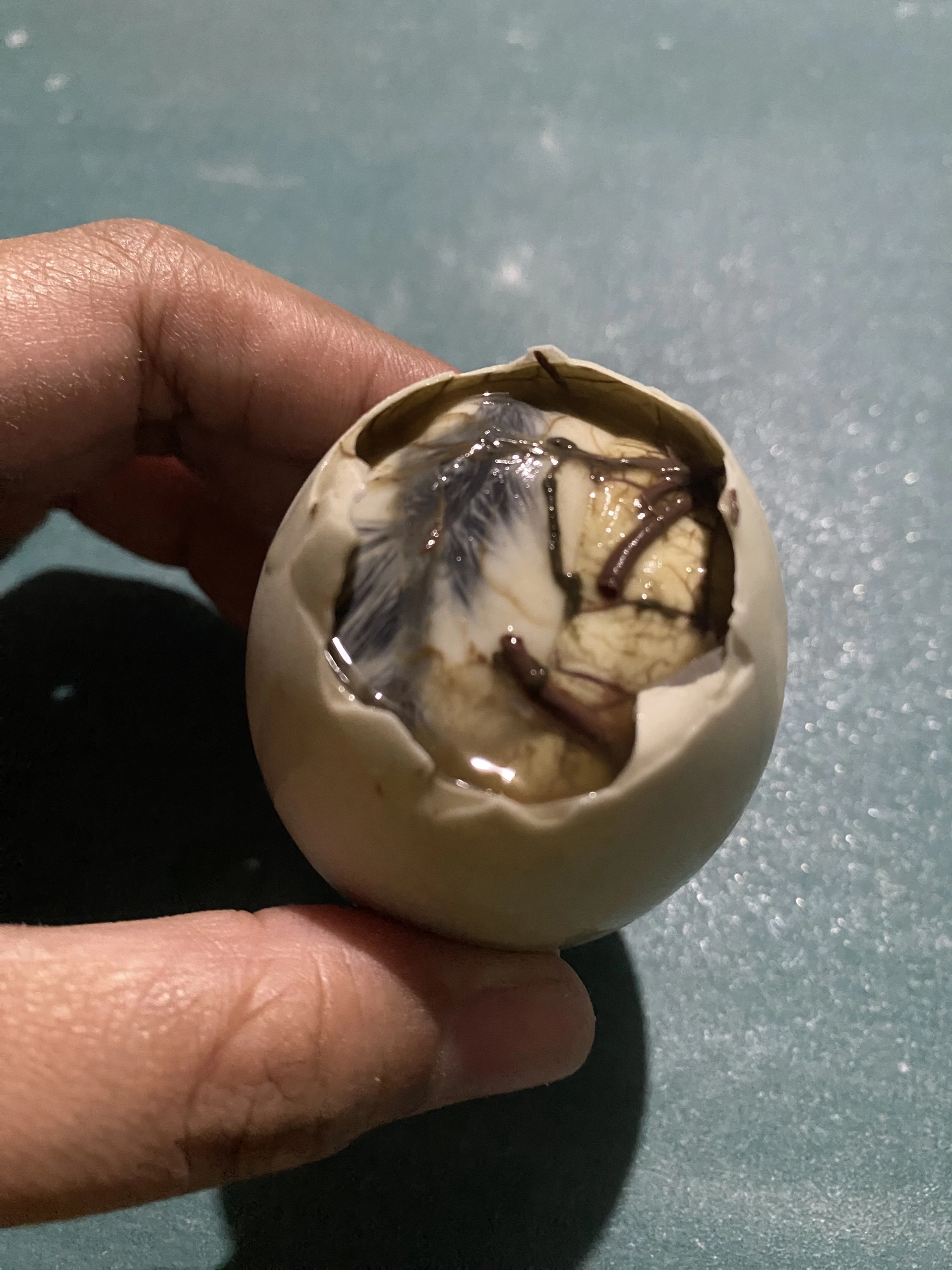Balut – The Filipino Delicacy That Challenges and Charms

If you’ve ever traveled through Southeast Asia, chances are you’ve stumbled upon food that pushed your culinary boundaries. But few dishes spark as much curiosity (and controversy) as balut—a fertilized duck egg that’s considered both a street food favorite and a rite of passage in the Philippines.
What Is Balut?
At first glance, it looks like any other egg—until you crack it open.
Balut is typically a 14 to 18-day-old fertilized duck embryo, boiled and eaten straight from the shell. Yes, that means there’s a partially developed duck inside, complete with feathers, beak, and bones (which are surprisingly soft when cooked). For many, that detail alone is enough to trigger a mix of intrigue and hesitation. But for Filipinos, balut is comfort food, rich in tradition and flavor.
A Bite of History
Balut has been part of Filipino culture for centuries, introduced during the Spanish colonial period, but believed to have originated in China. Over time, it embedded itself into the local culinary fabric, becoming a beloved late-night snack and a symbol of street food culture in the Philippines.
You’ll often find balut sold by vendors walking through neighborhoods at night, calling out “Baluuuuut!” in a sing-song tone that’s instantly recognizable to locals.
Balut Filipino Delicacy: How It’s Eaten
Eating balut is an experience. Here’s the typical way to do it:
- Crack the top of the shell just enough to sip the warm, savory broth inside. It’s often described as rich and chicken-like.
- Peel the shell halfway to reveal the yolk and embryo.
- Sprinkle a bit of salt, vinegar, or even chili and enjoy it in bites—some start with the yolk, others go straight for the embryo.
- The white part (called bato or “stone”) can be rubbery and is often left uneaten, especially in older eggs.
The Flavor Profile
Balut is…surprisingly tasty. The broth is deeply umami, the yolk is creamy and rich, and the embryo (though visually challenging for some) has a tender, meaty texture. Think of it as a duck soup, hard-boiled and handheld.
Of course, it’s not just about flavor—it’s also about mindset. For many first-timers, it’s more psychological than anything else.
Beyond the Shock Factor
While it might show up in “weird food” lists and daring travel videos, reducing balut to just a fear-factor stunt misses the point. It’s a food deeply woven into Filipino identity. It brings memories of late-night snacks, family gatherings, and street food camaraderie.
And balut isn’t just limited to the Philippines—you’ll find variations in Vietnam (hot vit lon), Cambodia, and Laos too, though each country prepares and seasons it a little differently.
Should You Try It?
If you’re open to new experiences, balut is absolutely worth trying at least once. Not just to say you did, but to genuinely taste and understand a dish that carries cultural weight. You might love it—or not—but either way, you’ll walk away with a story.
So the next time you hear a vendor calling “Baluuuut!” on a warm Filipino evening, consider cracking one open. You might discover a new favorite… or at least earn a solid notch in your culinary adventure belt.












